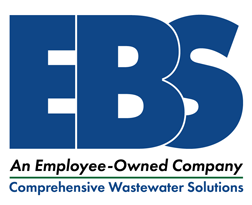Nutrient
Custom blend of nutrients made for your facility.
EBS provides customized nitrogen and phosphorus (N:P) blends to meet the needs of your system and biological population. Using respirometry, EBS determines the optimum formulation and dosage of our MacroGro™ nutrient blends customized for your WWTP. Our extensive network of blending facilities ensures competitive pricing and reduces the delivery lead time to get your system working at optimum levels sooner rather than later, thus reducing your risk, environmental impact, and cost to correct.
MacroGro™ Formulations
Macronutrients (nitrogen and phosphorus) are a critical part of industrial wastewater treatment system health. For every 100 lbs of BOD to remove, bacteria require 5 lbs of nitrogen and 1 lb of phosphorus. Some industrial facilities have adequate macronutrients, while some must supplement with nitrogen or phosphorus or both. EBS is a supplier of pH-neutral nitrogen and phosphorus blends of varying concentrations, commercially named MacroGro for the safe, effective application of supplemental macronutrients. MacroGro is available in tote or bulk quantities.
Interested in MacroGro or have a nutrient question? Contact us.
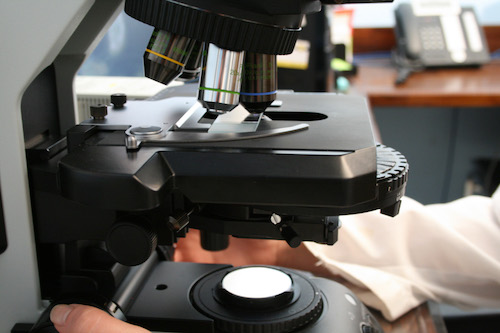
Phosphoric Acid
- Chemical Oxygen Demand (COD)
- Biochemical Oxygen Demand (BOD)
- Total Suspended Solids (TSS) Volatile Suspended Solids (VSS)
- Nutrient Analyses (including TKN)
- Oxygen Uptake Testing (DOUR and SOUR)
- Nutrient Content in Biomass
In addition to extensive microscopic examination and microbiological evaluation capabilities, the EBS laboratory conducts all the tests necessary for monitoring of a client’s biological wastewater system. These tests combined with the microscopic examination can provide a complete picture of the biological health and system performance.
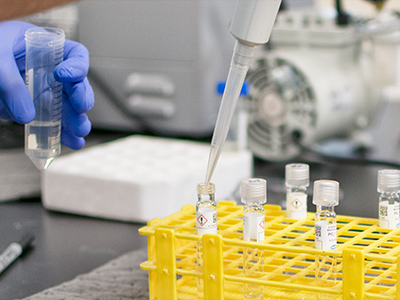
Carbon Sources
- Nutrient Evaluations
- Biological Product Studies
- Toxicity and Inhibition Studies
- Biodegradability Studies
- Nitrification Studies
- Anaerobic Process Studies
- Bench Scale Reactor Studies
- Soil Remediation Studies
Respirometry is the technique of continuously monitoring the oxygen uptake of biomass under controlled conditions and is a powerful tool for evaluating biological processes. At EBS, we are on the cutting edge in the use of respirometry to optimize nutrient and bioaugmentation applications in industrial wastewater treatment systems. The results of these studies have been used to improve treatment efficiency and reduce nutrient costs. In addition to nutrient evaluations, we use respirometry to conduct biodegradability studies, nitrification testing, toxicity/inhibition screenings, and performance comparisons of commercial biological additives.
EBS also performs continuous flow bench-scale studies to evaluate chronic inhibition/toxicity. These studies can also be used to calculate kinetic parameters, evaluate bioaccumulation, and biodegradability after biomass acclimation.
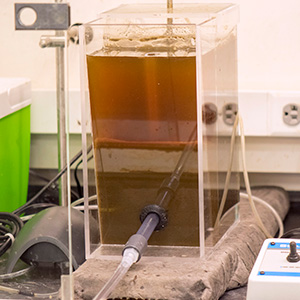
Oxygen Sources
- Fecal Coliform, E. coli, and Enterococcus concentration
- Track and quantify potential sources of fecal contamination
- Distinguish between Fecal-Associated and Environmental-Associated Fecal Indicator Bacteria
The utilization of Molecular Biology is increasingly important in the scope of wastewater treatment. Many plants have fecal coliform limits which are impacted by non-fecal sources of the fecal coliform bacteria. By identifying the source of fecal coliform contamination, the permit exceedances may be explained to the regulators. In wastewater studies, EBS can detect different species of bacteria present in the treatment system and quantify the amount of DNA in a sample from those organisms utilizing a Quantitative polymerase chain reaction (qPCR). Once DNA has been extracted from a water sample, multiple markers can be quantified to categorize the types of bacteria present in that sample and throughout the treatment system. If fecal indicator bacteria concentrations are too high in a system, studies can be designed to track and quantify potential sources of fecal contamination. We can use species-specific markers to differentiate between bacteria that likely come from environmental sources (e.g. plant material) and those that are found in human or animal feces.
Nutrients
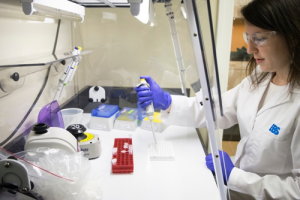
- Fecal Coliform, E. coli, and Enterococcus concentration
- Track and quantify potential sources of fecal contamination
- Distinguish between Fecal-Associated and Environmental-Associated Fecal Indicator Bacteria
The utilization of Molecular Biology is increasingly important in the scope of wastewater treatment. Many plants have fecal coliform limits which are impacted by non-fecal sources of the fecal coliform bacteria. By identifying the source of fecal coliform contamination, the permit exceedances may be explained to the regulators. In wastewater studies, EBS can detect different species of bacteria present in the treatment system and quantify the amount of DNA in a sample from those organisms utilizing a Quantitative polymerase chain reaction (qPCR). Once DNA has been extracted from a water sample, multiple markers can be quantified to categorize the types of bacteria present in that sample and throughout the treatment system. If fecal indicator bacteria concentrations are too high in a system, studies can be designed to track and quantify potential sources of fecal contamination. We can use species-specific markers to differentiate between bacteria that likely come from environmental sources (e.g. plant material) and those that are found in human or animal feces.

